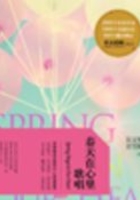我可以举一个简单的例子:在1973年,华盛顿邮报公司的总市值为8千万美元。在这一天,你可以将其资产卖给十位买家之一,而且价格不低于4亿美元,甚至还能更高。该公司拥有华盛顿邮报、商业周刊以及数家重要的电视台。这些资产目前的价值为4亿美元,因此愿意支付4亿美元的买家并非疯子。
现在,如果股价继续下跌,该企业的市值从8千万美元跌到4 千万美元,其bate值也上升。对于用bate值衡量风险的人来说,更低的价格让他觉得风险更大。这真是仙境中的爱丽丝。我永远无法了解,用4千万美元,而非8千万美元购买价值4亿美元的资产,其风险竟然更高。事实上,如果你买进一些这样的证券,而且稍微了解所谓的企业评价,则用8千万美元的价格买进4亿美元的资产,这笔交易基本上没有风险,尤其是分别以800万美元的价格买进10种价值4,000万美元的资产,其风险更低。因为你没有4亿美元,所以你希望能够找到诚实而有能力的人,这并不困难。
另外,你必须有能够粗略地估计企业价值的知识。但是,你并不需要精密地来评估。这便是本杰明·葛拉厄姆所谓的安全边际。你不必试图以8,000万美元的价格购买价值8,300万美元的企业。你必须让自己保有相当的缓冲。架设桥梁时,你坚持载重量为3万磅,但你只准许1万磅的卡车穿梭其间。相同的原则也适用于投资领域。
有些具备商业头脑的人可能会怀疑我撰写本文的动机:更多人皈依价值投资法,将会缩小价值与价格之间的差距。我只能够如此告诉各位,自从本杰明·格雷厄姆与大卫 ·多德出版《证券分析》以来,这个秘密已经流传了50年,在我奉行这项投资理论的35年中,我不曾目睹价值投资法蔚然成风。人的天性中似乎存在着偏执的特色,喜欢把简单的事情复杂化。最近30年来,学术界如果有任何作为的话,皆完全背离了价值投资的教训。这种现象很可能还会继续。船只将环绕地球而行。但地平之说仍会畅行无阻。在市场上,价格与价值之间还会存在着很大的差值,而奉行格雷厄姆与多德理论的人也会繁荣不绝。
导读
1984年在庆祝格雷厄姆与多德合著的《证券分析》发行50周年大会上,巴菲特在哥伦比亚大学的演讲稿。在他的演讲中,回顾了50年来,格雷厄姆的追随者们采用价值投资策略持续战胜市场的无可争议的事实,总结归纳出价值投资策略的精髓,在投资界具有非常大的影响力。
单词注解
crucial [5kru:FiEl] adj.决定性的,重要的
participant [pB:5tisipEnt] n.关系者;参与者
marvelous [5mB:vEl??] adj.令人惊叹的;非凡的;不可思议的
engaged [in5^eidVd] adj.从事……的;忙于……的
asset [5Aset] n.财产,资产
enormous [i5nC:mEs] adj.巨大的,庞大的
诵读名句
They argue that the stock market is efficient;that is,that stock prices reflect everything that is known about a company’s prospects and about the state of the economy.
You also have to have the knowledge to enable you to make a very general estimate about the value of the underlying businesses.
There will continue to be wide discrepancies between price and value in the marketplace,and those who read their Graham & Dodd will continue to prosper.
第一章 Stay Hungry,Stay Foolish (1)
苹果CEO乔布斯:求知若饥,虚心若愚
Steve Jobs/史蒂夫·乔布斯
I am honored to be with you today at your commencement from one of the finest universities in the world. I never graduated from college. Truth be told,this is the closest I’ve ever gotten to a college graduation. Today I want to tell you three stories from my life. That’s it. No big deal. Just three stories.
The first story is about connecting the dots.
I dropped out of Reed College after the first 6 months,but then stayed around as a drop—in for another 18 months or so before I really quit. So why did I drop out?
It started before I was born. My biological mother was a young,unwed college graduate student,and she decided to put me up for adoption. She felt very strongly that I should be adopted by college graduates,so everything was all set for me to be adopted at birth by a lawyer and his wife. Except that when I popped out they decided at the last minute that they really wanted a girl. So my parents,who were on a waiting list,got a call in the middle of the night asking:“We have an unexpected baby boy;do you want him?”They said:“Of course.”My biological mother later found out that my mother had never graduated from college and that my father had never graduated from high school. She refused to sign the final adoption papers. She only relented a few months later when my parents promised that I would someday go to college.
And 17 years later I did go to college. But I naively chose a college that was almost as expensive as Stanford,and all of my working-class parents’ savings were being spent on my college tuition. After six months,I couldn’t see the value in it. I had no idea what I wanted to do with my life and no idea how college was going to help me figure it out. And here I was spending all of the money my parents had saved their entire life. So I decided to drop out and trust that it would all work out OK. It was pretty scary at the time,but looking back it was one of the best decisions I ever made. The minute I dropped out I could stop taking the required classes that didn’t interest me,and begin dropping in on the ones that looked interesting.
It wasn’t all romantic. I didn’t have a dorm room,so I slept on the floor in friends’ rooms,I returned coke bottles for the 5¢ deposits to buy food with,and I would walk the 7 miles across town every Sunday night to get one good meal a week at the Hare Krishna temple. I loved it. And much of what I stumbled into by following my curiosity and intuition turned out to be priceless later on. Let me give you one example:
Reed College at that time offered perhaps the best calligraphy instruction in the country. Throughout the campus every poster,every label on every drawer,was beautifully hand calligraphed. Because I had dropped out and didn’t have to take the normal classes,I decided to take a calligraphy class to learn how to do this. I learned about serif and san serif typefaces,about varying the amount of space between different letter combinations,about what makes great typography great. It was beautiful,historical,artistically subtle in a way that science can’t capture,and I found it fascinating.
None of this had even a hope of any practical application in my life. But ten years later,when we were designing the first Macintosh computer,it all came back to me. And we designed it all into the Mac. It was the first computer with beautiful typography. If I had never dropped in on that single course in college,the Mac would have never had multiple typefaces or proportionally spaced fonts. And since Windows just copied the Mac,its likely that no personal computer would have them. If I had never dropped out,I would have never dropped in on this calligraphy class,and personal computers might not have the wonderful typography that they do. Of course it was impossible to connect the dots looking forward when I was in college. But it was very,very clear looking backwards ten years later.














